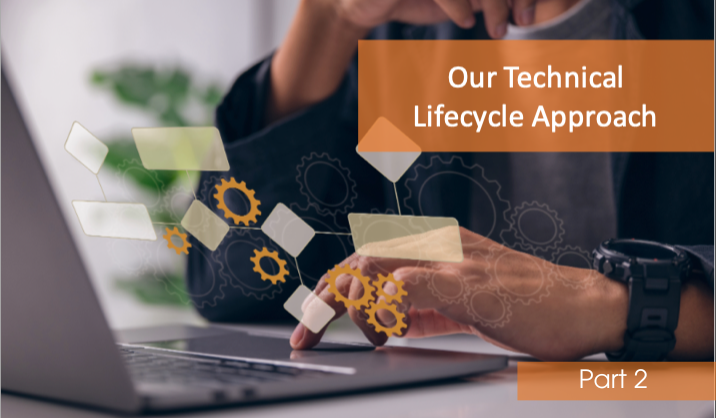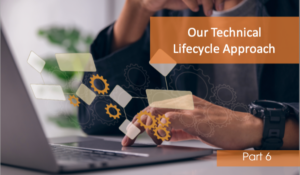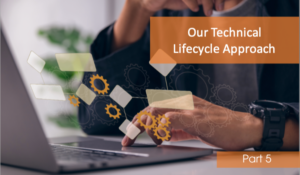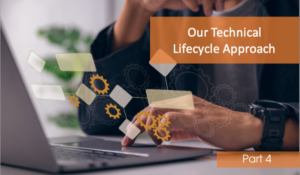Stage 2: Discovery – finding the information we need to build the right solution for you
This is the second of our deep-dive articles, walking our customers through our new Technical Delivery Lifecycle approach, which we’ll implement in early 2024. If you haven’t already, please read the introductory article, which will give you an overview of our approach and what happens before the Discovery stage.
What is Discovery, and why are we doing it?
Discovery is the process of finding all the relevant information we need to build a technical solution which might not be immediately available to us or to you.
It comes after the initial Triage stage and is mainly used for solution/development or service requests (see diagram below).
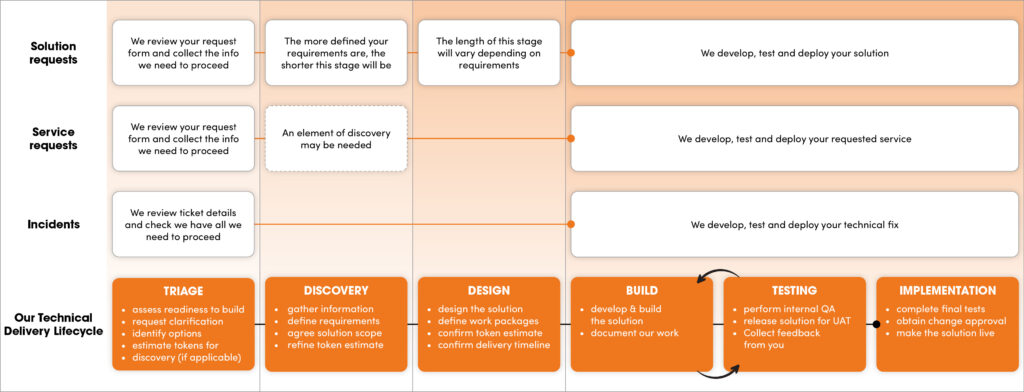
(Note that for incidents, we’ll be able to skip the Discovery stage and move directly to Design and Build, while for service requests, only a tiny element of discovery may be required before we move rapidly on to the Build stage.)
An example requirement might be a new process that you want to implement – for example, allowing a service desk analyst to log a service request for a user even if they’ve forgotten their username. You might know the desired outcome you want and the operational efficiency it will deliver for your organisation, but not how to get there.
At this key stage in the process, the more information you can supply us with, the more we’ll understand the scope of the work and the better the solution we’ll be able to build.
Having all the relevant information at our fingertips will also enable us to provide a more accurate estimate of the number of tokens the work will require.
How will we gather the information we need?
We’ll work closely with you to do this by asking questions and reviewing any documentation you can provide us. Speaking to relevant experts in your organisation – even if they have no technical knowledge – can also be extremely helpful as it enables us to understand what you’re trying to achieve and how we can ensure it will deliver optimum business benefits.
Depending on how much information is needed at this stage, we might be able to arrange one or more workshops with your business experts so we can gather requirements and consider the possible options for a solution.
In the workshop, or at another point, we may produce process flows and, user stories and use cases for you to work through and comment on. These will help us to deepen and refine our understanding of your needs.
For more on this, please look at our Build-Ready Guidance document, which details the information you can supply us with and how it will help.
What happens next?
Once we have everything we need, we’ll perform a validation exercise. That means collating the information we’ve gathered and presenting it back to you so we can check it correctly describes your requirements.
If it doesn’t, we’ll determine what additional information we need to collect and how to do it. But, hopefully, we’ll have everything we need to know, which means we’ll then be able to move on to the next stage in the process: Design and Build.
Why is the Discovery process so important, and how can you help make it successful?
The more effectively we undertake the Discovery process together, the greater the likelihood that the result will deliver the value for your organisation that you’re looking for.
It should be a highly collaborative process, so the more closely we work together and the more transparent you and your stakeholders can be, the better the outcome will be.
Do you know how you can find out more?
Over the next few weeks, we’ll continue to publish our series of articles, taking a deep dive into each step of the process. (Watch out for an email landing in your inbox every week, alerting you to the publication of the latest article.)
The following article will be about the Design stage.
Rest assured, before we launch our Lifecycle approach, we’ll meet with you to walk you through the changes and give you the chance to ask any questions.
But if you’d like to discuss any of this with us in the meantime, please don’t hesitate to get in touch.
